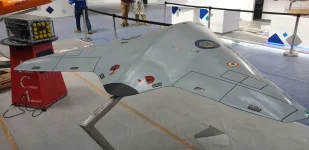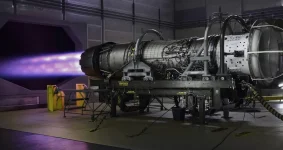- Views: 2K
- Replies: 4
India's Hindustan Aeronautics Limited (HAL) and Russia’s United Aircraft Corporation (UAC) signed a significant Memorandum of Understanding (MoU) in Moscow on October 27. The agreement paves the way for the manufacturing of the SJ-100 regional passenger jet in India.
This aircraft is a revised model of the Sukhoi Superjet 100, specifically re-engineered with domestic Russian components, such as the PD-8 engine, to bypass Western sanctions that had targeted its original foreign parts.
The deal, hailed as a "game changer" by officials, marks India's first full-scale assembly of a civilian passenger aircraft since the AVRO HS-748 programme in the 1980s.
A New Push for Civil Aviation
The primary goal of the partnership is to support India's civil aviation market, particularly the UDAN regional connectivity scheme. The 75- to 100-seat SJ-100, with a range of 3,000-4,000 kilometres, is seen as ideal for connecting smaller, underserved airports and tier-2 or tier-3 cities.Defence Minister Rajnath Singh praised the move as a major step toward self-reliance ("Aatmanirbharta") in aviation.
Proponents argue the deal provides India with strategic autonomy by reducing its heavy reliance on Western manufacturers like Boeing and Airbus, which currently dominate 90% of India's commercial fleet.
The project is expected to generate thousands of jobs and strengthen India's private aerospace ecosystem.
Strategic Military Potential
Beyond its civilian role, the SJ-100 platform offers significant strategic potential for India's military.The aircraft's modular design makes it a viable candidate for adaptation into specialised military variants. This dual-use capability is a key strategic element of the agreement.
Defence analysts note the platform could be modified for:
- Intelligence, Surveillance, and Reconnaissance (ISR): The airframe is suitable for conversion into an advanced ISR or signal intelligence (SIGINT) aircraft.
- Airborne Early Warning and Control (AEW&C): It could serve as a new platform for India's next-generation "Netra" AEW&C systems, potentially replacing the current fleet based on the Embraer ERJ-145.
- Maritime Patrol: A maritime patrol aircraft (MPA) variant could be developed for the Indian Navy or Coast Guard.
- Troop Transport/Medevac: The jet could also be configured for rapid troop deployment or medical evacuation missions.
Significant Challenges and Risks
Despite the opportunities, the project faces serious challenges.The original Sukhoi Superjet 100, from which the SJ-100 is derived, had a troubled history. Several international operators grounded their fleets due to chronic maintenance issues and difficulty in sourcing spare parts, problems exacerbated by sanctions.
Furthermore, the new Russian-made PD-8 engine, which replaces the sanctioned French-Russian SaM146, is still completing its certification trials. Any delays or reliability concerns with this new engine could deter cash-strapped Indian carriers.
It remains highly unlikely that major Indian airlines like IndiGo or Air India, whose fleets are built around proven Western aircraft, will adopt this new type.
There is also a risk that the project could become a simple assembly line with low local content, rather than a true example of indigenous manufacturing.
The Path to Success
For this venture to succeed, experts suggest HAL must move beyond simple assembly and create a deeply "Indian" SJ-100. This would involve integrating domestic suppliers, such as Tata or L&T, for major components like fuselages, wings, and interiors.A parallel approach of fast-tracking military adaptations with the DRDO and armed forces is considered crucial to ensure the platform's long-term viability.
Ultimately, the SJ-100 is seen not as an end-goal, but as a critical bridge. The project's success will be measured by its ability to achieve high (50-70%) localisation, build a robust supply chain, and provide HAL with the expertise needed to design and build a fully indigenous Indian regional jet in the future.





